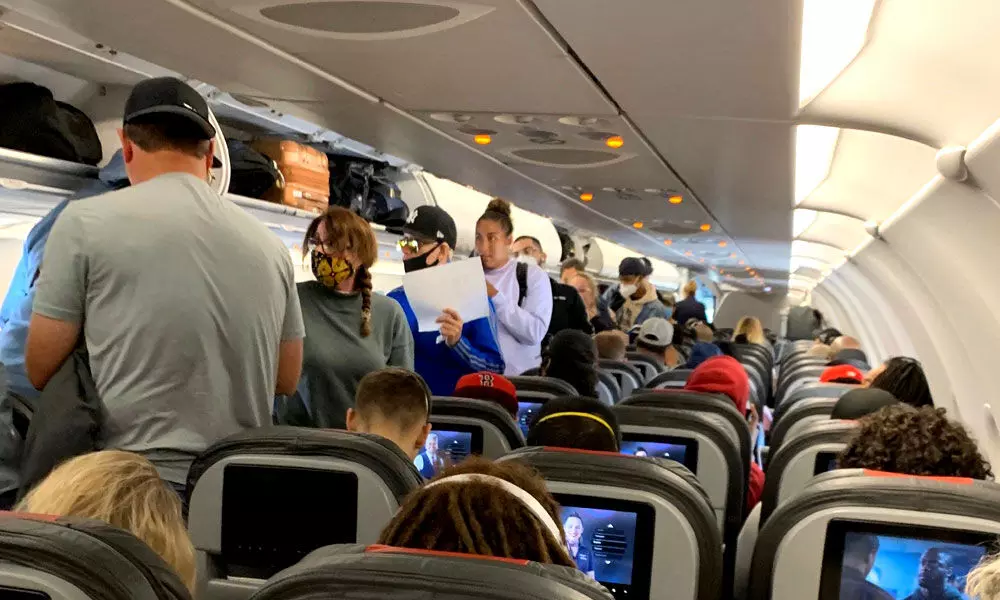There is still a long way for airlines to increase capacity
Airlines will focus on building versatile fleets that provide future network flexibility, maximizing capability while minimizing risk, and improving efficiency and sustainability
image for illustrative purpose

Government may maintain price floors and caps, at least for the first half of 2021
Leading up to the pandemic, India's civil aviation sector - valued at $16 billion per year - was on a high-growth trajectory that had poised it to be the third largest market globally this year and, potentially, the largest by 2030.
Pre-pandemic passenger traffic demand was growing faster than airport capacity and, by 2025, most of India's large cities were expected to require a second airport, with Mumbai potentially needing a third airport by 2030. To keep up with demand, India's airport capacity would need to grow by 90 million passengers annually.
World capacity recovery is underway! Global capacity was around the 106 million mark, but after four weeks of moving backwards a 7 per cent week on week increase sounds like a really positive step. And it is, but airlines generally remain cautious about the coming months with a further 39 million seats removed by airlines through to the end of May. There is still a long way to go in the recovery.
The new average production rates for the A320 Family will now lead to a gradual increase in production from the current rate of 40 per month to 43 in Q3 and 45 in Q4 2021. This latest production plan represents a slower ramp up than the previously anticipated 47 aircraft per month from July.
The A220 monthly production rate will increase from four to five aircraft per month from the end of Q1 2021 as previously foreseen. Wide-body production is expected to remain stable at current levels, with monthly production rates of around five and two for the A350 and A330, respectively. This decision postpones a potential rate increase for the A350 to a later stage.
Airbus continues to monitor the market closely. With these revised rates, Airbus preserves its ability to meet customer demand while protecting its ability to further adapt as the global market evolves. Airbus expects the commercial aircraft market to return to pre-Covid levels by 2023 to 2025.
The current market disruption will shape airline fleet strategies long into the future as airlines make decisions to renew their fleets and resume growth. Airlines will focus on building versatile fleets that provide future network flexibility, maximizing capability while minimizing risk, and improving efficiency and sustainability.
Boeing anticipates airlines in Southeast Asia will need 4,400 new airplanes valued at $700 billion to support expanding demand for air travel over the next 20 years. The intra-Southeast Asian market will become the fifth largest in the world by 2039, and the vast domestic and regional air-travel network across the region positions it well for a post-pandemic recovery, according to Boeing's 2020 Commercial Market Outlook (CMO).
With low-cost carriers providing affordable service and added capacity, the CMO projects passenger traffic growth in Southeast Asia to grow by 5.7 per cent annually throughout the forecast period. Through the period, Southeast Asia will become the second largest aviation market in the Asia-Pacific region after China. Boeing projects the region's commercial airplane fleet will grow 5.3 per cent annually over the next 20 years. In addition, demand for aftermarket commercial services - valued at $790 billion - will help maintain the fleet over the same period.
Boeing Company on Monday said the Indian civil aviation sector would require 856 new commercial jet airplanes worth over $72 billion over the next 20 years.
"It also forecasts a considerable increase in the air freight market that will need to support the country's exports, which are growing at an estimated 5-6 per cent a year for the next 20 years," he added.
As with airlines everywhere, 2020 is a year India's airlines would rather forget. Given the disruption wrought by Covid-19, domestic traffic stands at roughly 270,000 passengers daily, down from 400,000 daily in 2019, and high-yielding business traffic has yet to return. Moreover, international traffic has all but completely collapsed.
CAPA India foresees that the government may maintain price floors and caps, at least for the first half of 2021.
The number of passengers per flight is around 111 in January 2021 as compared to around 134 in January 2020. Passenger load factor is around 72 per cent as compared to 86 per cent in January 2020 could indicate room for capacity growth.

